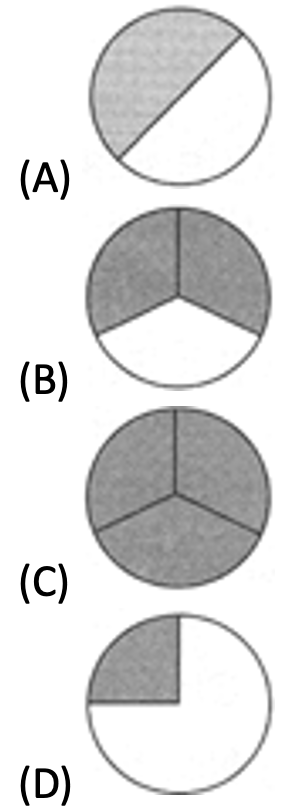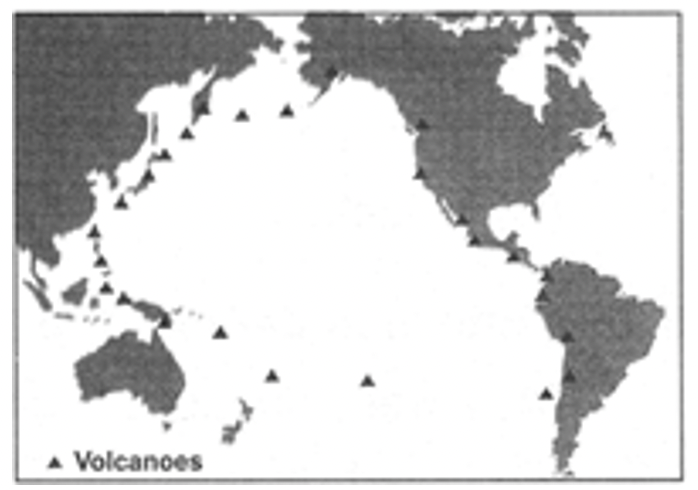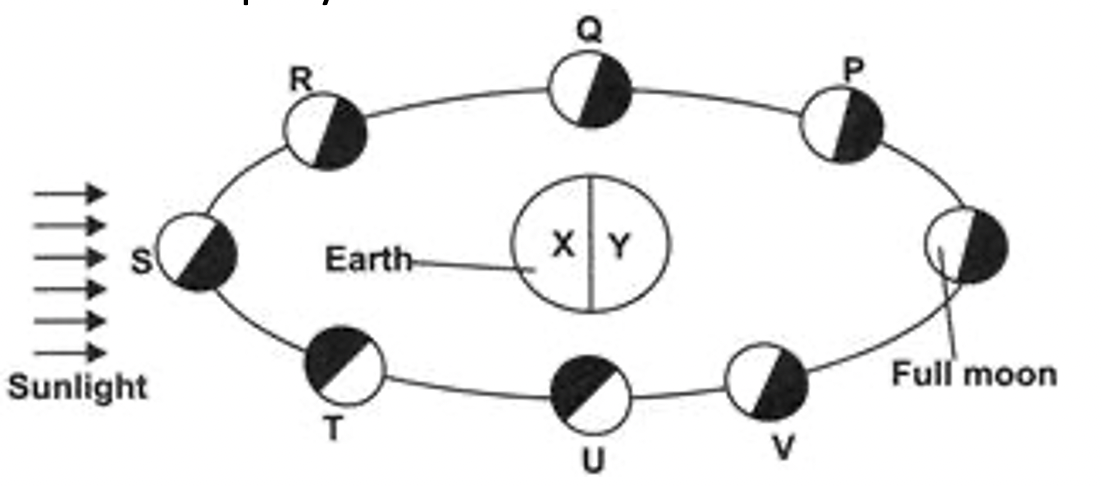CBSE Class 4 EVS Chapter Our Universe Worksheet Questions and Answers
Q.1 The planet on which life exists.
(A) Earth
(B) Mercury
(C) Moon
(D) Jupiter
Answer:
A
Q.2 Smallest neighbor of the sun is:
(A) Venus
(B) Mercury
(C) Earth
(D) Jupiter
Answer:
B
Q.3 Three-fourth of the earth's surface is covered with
(A) Air
(B) Land
(C) Water
(D) Plants
Answer:
C
Q4. Planet which is also known as a morning star.
(A) Mercury
(B) Earth
(C) Saturn
(D) Venus
Answer:
D
Q5. Which of the following statements is not correct?
(A) There are eight planets in the solar system.
(B) Planets do not rotate on their axis.
(C) Planets revolve around the sun.
(D) Planets do not have their own light.
Answer:
B
Q6. Light year is distance travelled by:
(A) Moon in one year.
(B) Jupiter in one year.
(C) Light in one year.
(D) Sun is one year.
Answer:
C
Q7. Rotation is a movements of:
(A) Earth around the sun.
(B) Earth on its axis.
(C) Mars around the sun.
(D) Venus around the sun.
Answer:
B
Q8. Movement of earth around the sun is called:
(A) Rotation
(B) Orbit
(C) Revolution
(D) Spinning
Answer:
C
Q9. A circular fixed path in which planets are revolving around the sun is called:
(A) Curved surface
(B) Equator
(C) Orbit
(D) Horizon
Answer:
C
Q.10 ____ is the coldest planet of solar system.
(A) Mercury
(B) Venus
(C) Earth
(D) Neptune
Answer:
D
Q.11 Name the fifth planet from the sun in the solar system.
(A) Earth
(B) Mass
(C) Jupiter
(D) Mercury
Answer:
C
Q.12 How many planets are there between sun and mars?
(A) Three
(B) Four
(C) Two
(D) Five
Answer:
A
Q.13 Imaginary line around which earth is spinning is:
(A) Orbit
(B) Equator
(C) Axis
(D) Horizon
Answer:
C
Q.14 One rotation of earth is completed in:
(A) About 28 hours
(B) About 24 hours
(C) About 12 hours
(D) About 21 hours
Answer:
B
Q.15 Earth completes one ____ in 365 days.
(A) Rotation
(B) Revolution
(C) Spinning
(D) Circulation
Answer:
B
Q.16 Match the following:
| Column A | Column B | ||
|---|---|---|---|
| (I) | Earth | [A] | Star |
| (II) | Sun | [B] | Satellite |
| (III) | Moon | [C] | Planet |
| (IV) | Orbit | [D] | Circular Path |
(A) (I-C), (II-A), (III-B), (IV-D)
(B) (I-D), (II-C), (III-B), (IV-A)
(C) (I-C), (II-C), (III-D), (IV-B)
(D) (I-B), (II-C), (III-A), (IV-D)
Answer:
A
Q.17 Which of the following statements is correct?
(A) The direction of spinning of earth is from east to west.
(B) The direction of spinning of earth is from west to east.
(C) The direction of spinning of earth is from north to south.
(D) The direction of spinning of earth is from south to north.
Answer:
B
Q.18 Innermost layer of earth is:
(A) Core
(B) Mantle
(C) Crust
(D) Coat
Answer:
A
Q.19 A heavenly body that revolves around planets is a:
(A) Star
(B) Meteorite
(C) Satellite
(D) Constellation
Answer:
C
Q.20 Which of the following is not a satellite?
(A) Sputnik
(B) Pluto
(C) Rohini
(D) Aryabhata
Answer:
B
Q.21 Which among the following is not a constellation?
(A) Scorpius
(B) Ursa Major
(C) Venus
(D) LEO
Answer:
C
Q.22 Which constellation among the following is also known as the "Great Bear"?
(A) LEO
(B) Orion
(C) Scorpius
(D) Ursa Major
Answer:
D
Q.23 Person who travel to space:
(A) Physicist
(B) Astronomer
(C) Palmist
(D) Zoologist
Answer:
B
Q.24 Group of stars join to form some patterns in the sky are called:
(A) Meteors
(B) Constellations
(C) Satellites
(D) Planets
Answer:
B
Q.25 Who built Jantar Mantar in Delhi?
(A) Varahamihira
(B) Bhaskara
(C) Maharaja Jai Singh
(D) Aryabhata
Answer:
C
Q.26 Which one of the following is not a planet?
(A) Neptune
(B) Uranus
(C) Mars
(D) None of these
Answer:
D
Q.27 Solar system consists of ____ planets revolving around the sun.
(A) 3
(B) 5
(C) 8
(D) 9
Answer:
C
Q.28 When we do not see moon in the sky, this phase of moon is called:
(A) Full moon
(B) Gibbous moon
(C) New moon
(D) Crescent moon
Answer:
C
Q.29 Milky way is a ____
(A) Plant
(B) Galaxy
(C) Star
(D) Moon
Answer:
B
Q.30 Jupiter has more than ____ number of moons.
(A) 60
(B) 150
(C) 100
(D) 200
Answer:
A
Section – II
Q.1 Parts near equator have ______ marked seasons because _______.
(A) No, they face the Sun for six months continuously
(B) Clearly, they face the Sun for six months continuously
(C) No, they retain at almost same angle to the Sun throughout the year
(D) Clearly, they retain at almost same angle to the Sun throughout the year
Answer:
A
Q.2 Select the odd one out based on the composition.
(A) Mars
(B) Venus
(C) Earth
(D) Jupiter
Answer:
D
Q4. ____ day(s) to complete one revolution in its orbit around centre of the solar system.
(A) 28, 365
(B) 24, 1
(C) 1, 365
(D) 24, 365
Answer:
C
Q5. ______ is an opening on the Earth's surface which releases lava when explodes.
(A) Volcano
(B) Valley
(C) Mountain
(D) Ocean
Answer:
A
Q6. Pluto was demoted to be a ______ planet in ______.
(A) Dwarf, August 24, 2006
(B) Giant, August 24, 2006
(C) Dwarf, August 15, 2005
(D) Giant, August 15, 2005
Answer:
A
Q7. The festival of Holi marks the coming of ____.
(A) Autumn
(B) Winter
(C) Spring
(D) Summer
Answer:
C
Q8. The season when temperature is moderate and blooming flowers could be seen all around is called ____.
(A) Autumn
(B) Spring
(C) Summer
(D) Winter
Answer:
B
Q9. Match the column I with column II and select the correct option.
| Column I | Column II |
|---|---|
| a. Brightest planet | 1. Mercury |
| b. Morning star | 2. Venus |
| c. Evening star | 3. Mars |
| d. Red planet | 4. Saturn |
| e. Largest planet | 5. Jupiter |
(A) a-1, b-2, c-3, d-3, e-5
(B) a-2, b-2, c-2, d-3, e-5
(C) a-5, b-1, c-2, d-3, e-4
(D) a-4, b-2, c-1, d-2, e-5
Answer:
B
Q.10 Which one of the following pie-charts represents the fraction of Earth that is NOT covered by water? The shaded part represents the fraction.

Answer:
D
Q.12 The figure below shows the shapes of Moon as seen from Earth on different nights. Which one of She following figures shows the correct shape of Moon on 21st November?

Answer:
C
Q.13 The given map shows some of the world's volcanoes. Which conclusion can be drawn from the map?

(A) Volcanoes occur on only one continent.
(B) Volcanoes are affected by climate.
(C) Volcanoes are concentrated in certain areas.
(D) Volcano belt occurs across a huge land mass on Earth.
Answer:
D
Q.14 The axis of the Earth is tilted at an angle, this explain?
(A) Northern hemisphere is away from the Sun and the Southern hemisphere is towards it
(B) Southern hemisphere is away from the Sun and the Northern hemisphere is towards it
(C) Season in the Northern hemisphere can never be the same as the season in the Southern hemisphere
(D) All of these
Answer:
C
Q.15 The given figure shows three layers of Earth. Select the correct option regarding it.

(A) W and X are liquid layers.
(B) Surface of Y is called crust.
(C) Layer Z makes up most of the total Earth's volume.
(D) All of these
Answer:
B
Q.16 Select the correct option regarding the planets of our Solar System.
(A) The size of the planet determines the size of its orbit.
(B) The distance of the planet from the Sun determines its revolution period.
(C) The planet nearest to the Sun has highest temperature in our Solar System.
(D) The largest planet is found nearest to the Sun and the smallest planet is situated far away from the Sun.
Answer:
B
Q.17 Which of these correctly shows the relation of the revolution of the Earth the Sun with the seasonal weather changes?

Answer:
C
Q.18 Study the given diagram.
(i) The phases of the Moon can be seen on side of the Earth.
(ii) Which of the phases are as equally illuminated as the Earth?

(A) (i)-Y, (ii)-P and Y
(B) (i)-Y, (ii)-Q and U
(C) (i)-X, (ii)-R and T
(D) (i)-X, (ii)-Q and U
Answer:
B